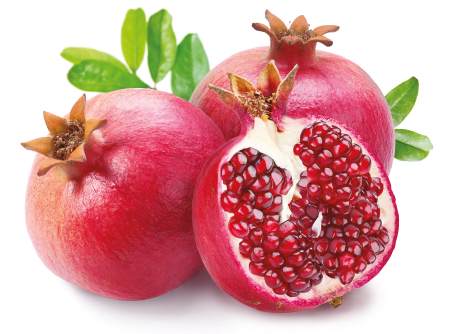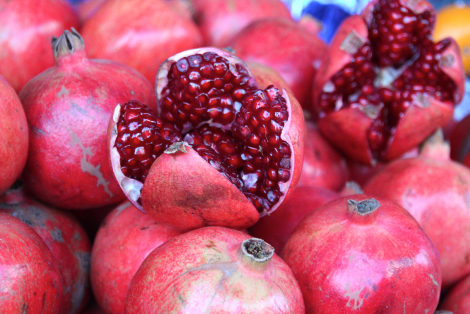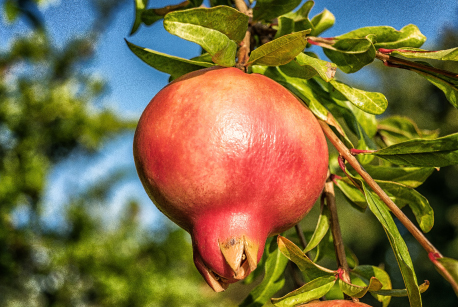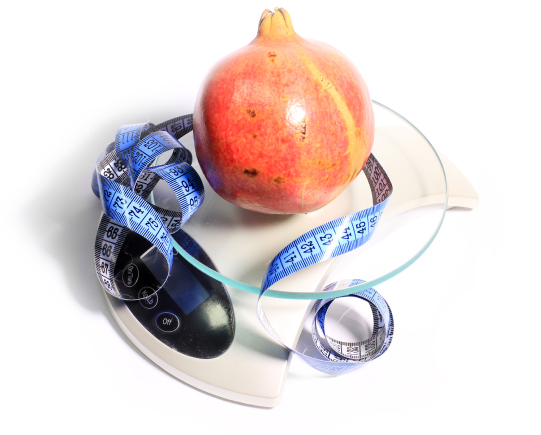
|
DESCRIPTION OF THE FRUIT
The edible fruit is a globular berry with a bottom crown, with a size between a lemon and a grapefruit, of 5 to 12 cm in diameter, round shaped and with a thick reddish skin. It has a sweet and tart taste. The number of seeds in a pomegranate can vary from 200 to 1400, grouped in separate cavities (loculi). Each seed has a pulp full of edible water, formed from the white to deep red seed coat. |
|
ORIGIN
ITS SCIENTIFIC NAME IS PUNICA GRANATUM , AND IT IS A CLIMBING PLANT OF THE LITHRACEAE FAMILY. It comes originally from Iran and is a deciduous shrub that can reach 5 to 8 m high, has multiple spiny stems and is remarkably long-lived, sometimes up to 200 years. The flowers are bright red and 3 cm in diameter, with three to seven petals; some varieties are grown only for the flowers. Due to its significant health benefits, it has generated much global interest in the last decade. It is mostly grown in the coastal region of Peru and exported to different countries. |

|

|
VITAMINS, MINERALS, AND NUTRIENTS
POMEGRANATE Every 100g of fresh fruit contains:
ENERGETIC VALUE
Approximately 83 kilocalories
CARBOHYDRATES
Contains 18,7 g of carbohydrates
• 4 g of fiber • 13,7 g of sugar VITAMINS
• B1 (thiamin), B2 (riboflavin), B3 (niacin), B6
• C (ascorbic acid): 10,2 mg • K: 16,4 µg MINERALS
• Calcium: 10 mg
• Magnesium: 12 mg • Phosphorus: 36 mg • Potassium: 236 mg • Sodium: 3 mg |
HEALTH BENEFITS
|

|